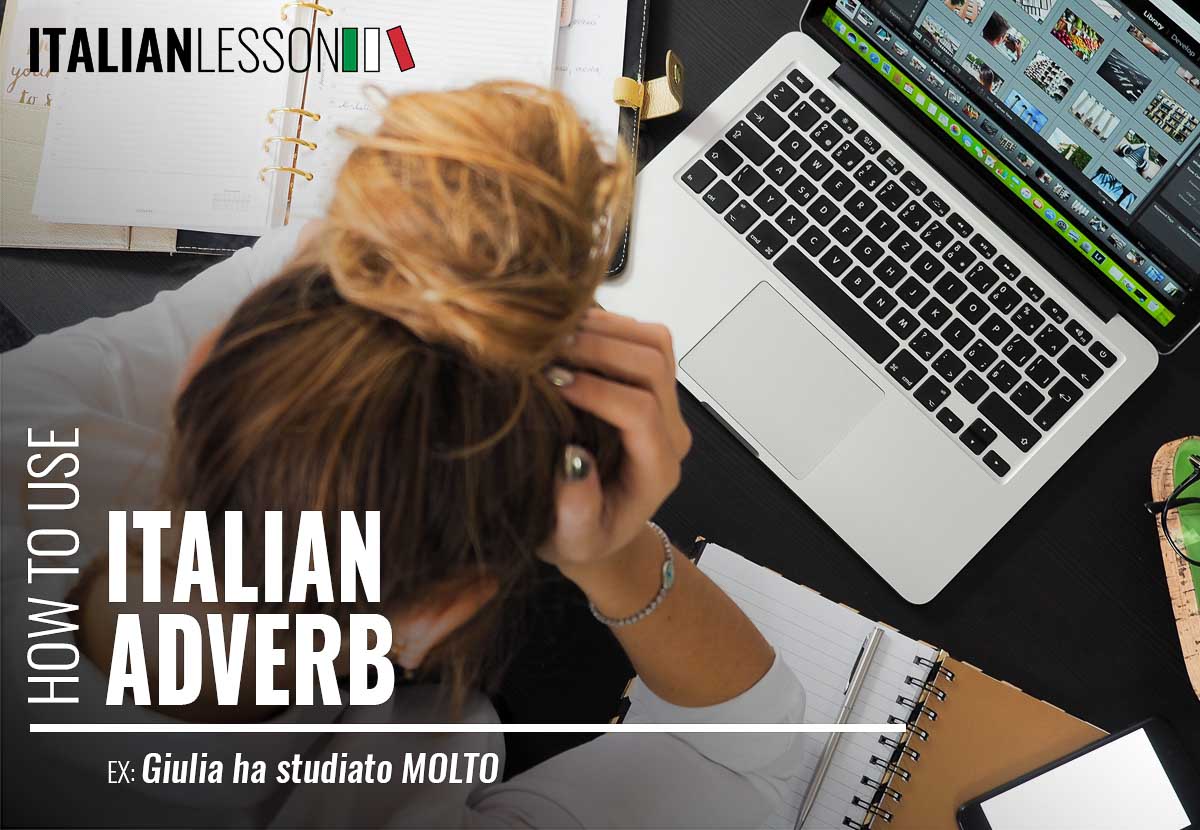
Today we’ll study the Italian Adverb!
Step by step, while studying a foreign language, you should add small bricks to the fantastic and linguistic wall that you are building.
There are three small bricks that you need to “fortify” every day: Italian grammar, Italian vocabulary and Italian pronunciation.
First of all, in Italian grammar, like in other languages’ grammar, the adverb plays the role of changing the meaning of a verb, an adjective or another adverb to which it refers.
Learning parts of speech such asadjectives or adverbs is very important for improving your Italian vocabulary because these words are very useful if you want to hold your ground in any conversation.
Moreover, many Italian adverbs ends with “mente”, for example:
lentamente / slowly
frequentemente / frequently
prontamente / promptly
and you could probably have fun, after having repeated 574985 times the spelling of these words, improving your Italian pronunciation even more by saying “mente” many times and figuring out that the word “mente”, on its own, stands for “mind”!
But let’s go back to our beloved Italian grammar!
Since there are different types of adverb, it is better to do an Italian adverbs list that will help you keep them all in mind:
| ADVERBS OF PLACE | indietro (back), sopra (above), sotto (below) |
| ADVERBS OF TIME | prima (before); dopo (after); tardi (late) |
| ADVERBS OF MANNER | lentamente (slowly); ferocemente (fiercely); velocemente (quickly) |
| ADVERBS OF QUANTITY | abbastanza (enough); assai (very much); affatto (at all) |
| ADVERBS OF VALUATION | certo (sure); sicuramente (surely); indubbiamente (undoubtedly) |
| ADVERBS OF DOUBT | circa (about), quasi (almost), forse (maybe/perhaps) |
| INTERROGATIVE AND EXCLAMATORY ADVERBS | come? (How?) Dove? (Where?) Quando? (When?) Come sono felice! (How happy I am!) Era davvero bello! (It was really nice!) Ma dove sei! (Where are you!) |
This list is very useful for giving you a general idea about how many types of adverb we have in Italian grammar.
There’s a specific one, the adverb of time, that includes another type of adverb, called “of frequency”.
Some examples of Italian adverbs of frequency can be:
sempre / always
spesso / often
mai / never
raramente / rarely
presto / soon
Now you are wondering: what is the difference between adverbs of frequency and other types of adverb?
Well, Italian adverbs of frequency are different from other adverbs but what’s important for you, by now, is to know how many they are and learn how to use them in Italian!
Although in Italian grammar adverbs don’t have a fixed position in a sentence, (on the other hand, in English, adverbs are often placed at the beginning or the end of a sentence), it’s easy to understand which verb they refer to because, for example, in the case of an Italian adverb of frequency, we assume its reference based on the closest verb.
Ok, it’s time to give you some examples!
Ogni estate vado al mare in Sardegna / Every summer I go to the beach in Sardinia
Spesso compro il gelato / I often buy ice cream
Non vado mai al parco da sola / I never go to the park alone
Ogni tanto mi piace andare a correre / Sometimes I like to go for a run
Lei dice raramente falsità / You rarely speak untruths
As you can see from these examples, it’s not easy to understand how to use adverbs correctly; in this case, but also in general if you’re learning a foreign language, the only way to improve your skills is to read (e.g.,Italian books) and practice more and more!
Don’t give up! You will make it!
